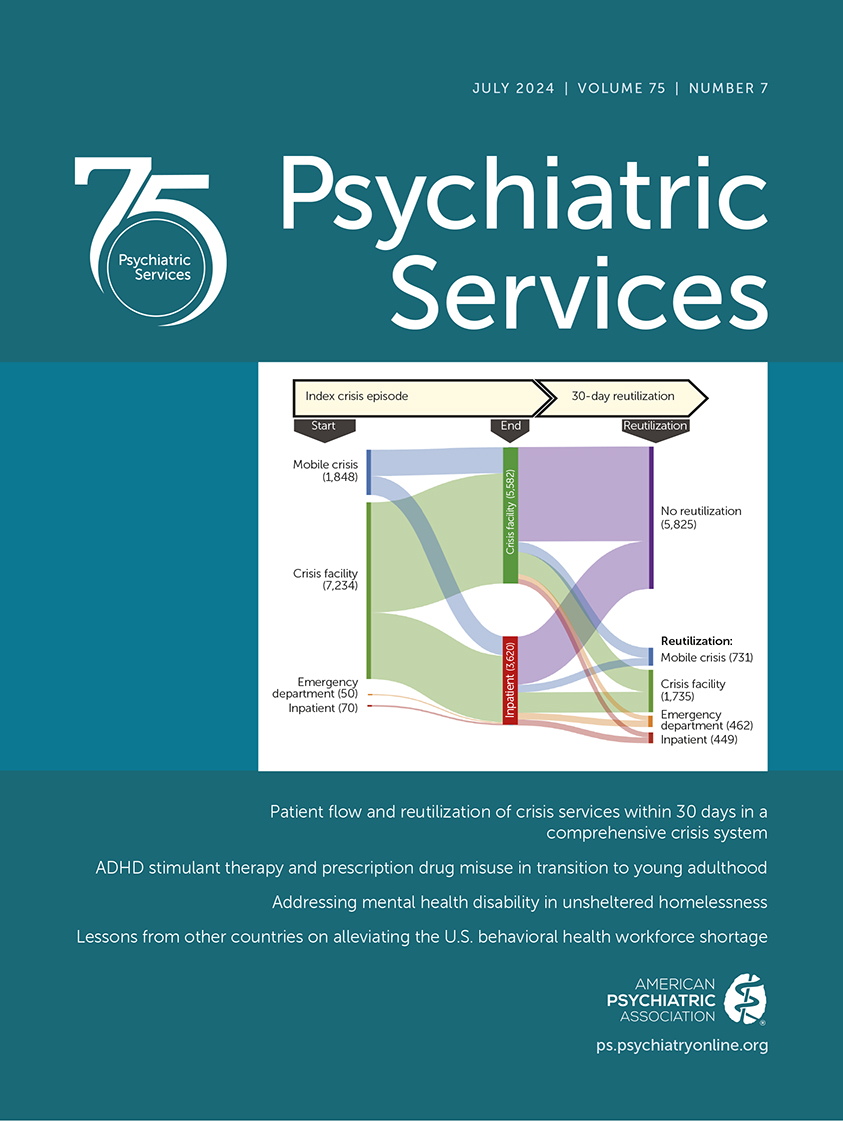Psychiatric Services
- Volume 32
- Number 11
- November 1981
Article
Publication date: 01 November 1981
Pages767–775In recent years, psychiatrists in both the public and private sectors have been insufficiently involved in the treatment of chronic psycbiatric illness. Simultaneously, deinstitutionalization has made the treatment of chronic patients more complex. In ...
https://doi.org/10.1176/ps.32.11.767Publication date: 01 November 1981
Pages776–778Since the end of World War II, psychiatrists have been moving from state hospitals to community general hospitals in ever-increasing numbers. The general hospital is fast becoming the coordinator of the mental health services system, largely because of ...
https://doi.org/10.1176/ps.32.11.776Publication date: 01 November 1981
Pages779–782The developing interaction of mental health care and general health care, as exemplified by the increased use of general hospital psychiatric units, has been caused by a number of factors. Among them are factors from within the field of psychiatry and ...
https://doi.org/10.1176/ps.32.11.779Publication date: 01 November 1981
Pages782–785The care and treatment of adolescents on an adult acute psychiatric unit in a general hospital can pose serious problems for unit staff. Adolescents with behavior or character problems who prove violent or manipulative can disrupt treatment of both the ...
https://doi.org/10.1176/ps.32.11.782Publication date: 01 November 1981
Pages786–790As deinstitutionalization has proceeded, it has left in its wake a variety of basic changes in patterns of service delivery to chronic mental patients. Although all components of the psychiatric service system have been affected by the diminishing ...
https://doi.org/10.1176/ps.32.11.786Publication date: 01 November 1981
Pages791–795A questionnaire survey of 51 patients voluntarily admitted to a Canadian psychiatric hospital was used to obtain their views of discussions they held with hospital staff about major treatment decisions, including whether selected treatment issues were ...
https://doi.org/10.1176/ps.32.11.791Publication date: 01 November 1981
Pages795–798Traditional psychological measures, diagnostic levels, and biographical and demographic data have all failed as reliable predictors of the outcome for clients in psychiatric rebabilitation programs. An instrument called the Client Adjustment Rating Scales ...
https://doi.org/10.1176/ps.32.11.795Past Issues
View Issues Archive
Vol. 75 | No. 8

Vol. 75 | No. 7

Vol. 75 | No. 6
